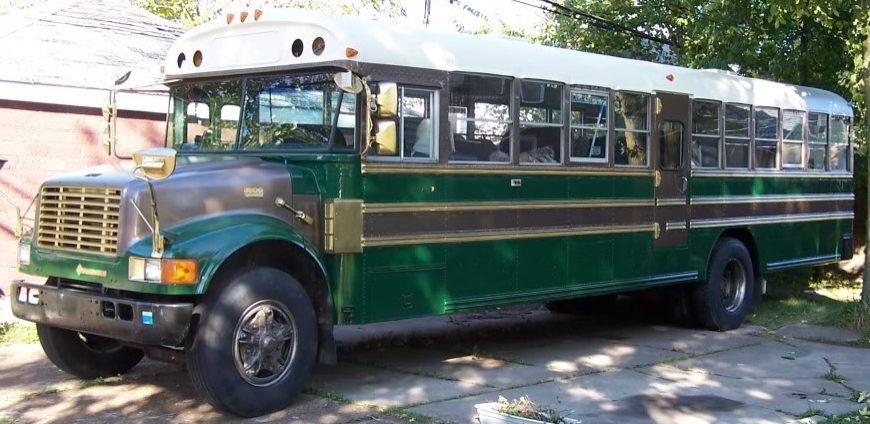So, another destination area for us is out to the west of the Biggest Ball of Twine in Minnesota, the Black Hills area of South Dakota and Wyoming. The Black Hills are a small, isolated range of mountains in the midst of the Great Plains, and got their name from the way the heavily forested mountains looked from a distance across the plains.
The oldest rocks in the formation are Precambrian rocks (mostly granite in the core, dated to about 1.8 billion years ago) pushed up by volcanic uplift in the center, with more recent rings of exposed Paleozoic , Mesozoic, and Cenozoic layers going from the center out, often explained as looking at a bullseye with the oldest rock at the center and the most recent at the edges. If you want tones of technical details, the US Geological Survey has a whole pamphlet of information on it here.
Once there, though, there are a number of localities that we would want to examine in detail:
Mount Rushmore:
Carved (and blasted) from a granite batholith formation in the Black Hills, Mount Rushmore features 60-foot (18 m) sculptures of the heads of four United States presidents: George Washington (1732–1799), Thomas Jefferson (1743–1826), Theodore Roosevelt (1858–1919), and Abraham Lincoln (1809–1865). Construction on the memorial began in 1927, and the presidents’ faces were completed between 1934 and 1939 by Gutzon Borglum and then after 1941, finished by his son Lincoln Borglum.
While the Lakota Sioux called the peak the ‘Six Grandfathers’, and had been a spiritual location for the Oglala Lakota Sioux medicine man Black Elk (writer of Black Elk Speaks). But this similarity of profiles in the view was what drove South Dakota historian Doane Robinson to suggest to Congress that historic likenesses should be carved into the mountainside to try and promote tourism into South Dakota. This is an unfortunate byproduct of the military campaigns of 1876-78 where the United States government forcibly took the lands from the Lakota Sioux due to the controversial 1868 Treaty of Fort Laramie.
A Native American answer to Mount Rushmore is …
Crazy Horse Memorial:
About nine miles away as the crow flies is the Crazy Horse Memorial, conceived by Lakota leader Chief Henry Standing Bear and designed and expanded by Korczak Ziolkowski. Intended to be a mounted likeness of the Lakota leader Crazy Horse, this unnamed mountain peak is being systematically reduced and carved into a monument 641 feet long and 563 feet high!
Jewel Cave National Monument:
Jewel Cave National Monument contains Jewel Cave, currently the third longest cave in the world, with 179 miles of mapped passageways. Declared a national monument by Teddy Roosevelt in 1908, it wasn’t until much later in that century that most of what we have mapped of the cave was discovered. Named for the calcite crystals that adorned the first two miles of the original entrance, there are many other areas people can see, and an average of three additional miles are explored and mapped each year!
Wind Cave National Monument:
Another of Teddy Roosevelt’s National Monument declarations, Wind Cave was the very first cave system to get the National Monument designation in 1903.
Among its notable geological features are the calcite boxwork (caused by erosion rather than accretion), of which the Wind Caves contain almost 95% of the known boxwork formations in the world, as well as the fact that the caves form the densest three-dimensional cave maze in the world! Definitely not a place to wander off on your own without a good bread-crumb trail. But is also supposed to have been the site of emergence for the Lakota Sioux in their creation story, making is a sacred location.
Devils Tower National Monument:
Some 75 miles northwest of Jewel Cave is the amazing Devils Tower monolith, the remains of igneous rock that may or may not have actually erupted. Either way, however, the sedimentary rock around it eroded away, leaving the tougher rock, with some hexagonal columns standing alone.
Again, thanks to Teddy Roosevelt, Devils Tower became the First National Monument on September 24th, 1906. But before that, this site was sacred to several Native American tribes, with several of their legends regarding the area referring to bears, whose claws raked the sides of the monolith as they strove to get at the trapped people atop it.
This is, however, some 1470 miles from Buffalo, making it about a 25 hour trip (at bus speed) to get there. Likely, it will be part of a bigger trip.
For more on Black Elk, and Lakota sacred views and practices, check out:


